
Saturday, September 30, 2006
Wednesday, September 27, 2006
Chilly Willy-"I'm Cold"
Here's Tex Avery's first Chilly Willy cartoon that he directed at Lantz Studios along with Tex Avery's redesign of Chilly Willy. One of the things I like about Tex's shorts at Lantz is that the characters are drawn closer to Tex's drawing style. Check out the storyboard from another of his Chilly Willy shorts, "The Legend Of Rockabye Point" drawn by Tex. This is also the first appearance of Smedley, voiced by Daws Butler.
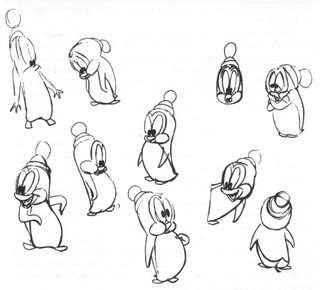
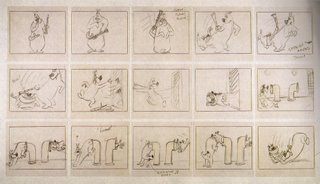


Tuesday, September 26, 2006
Bar Sheet Template

Someone left a comment on my post about timing to music asking if I could post a template of the bar sheets that I'm using. So here it is in PDF format, save yourself some time and just right-click and "Save As". I'm sure there's a better way to format a bar sheet but this has been working for me. Happy timing!
Friday, September 22, 2006
The Not So Little 'Tinker Post
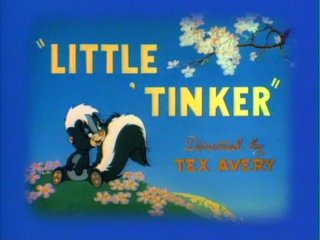
I was listening to "All Or Nothing At All" by the Harry James Orchestra featuring Frank Sinatra today and the first thing that came to mind was the "Frankie" scene, featuring the same song, from Tex Avery's "Little 'Tinker". I love this cartoon, it's great to see a bunch of Disneyesque bunnies swoon over 'Tinker in his Frankie get-up in the same way Tex's Wolf does over Red. I read that Tex sort of dismissed this one as a cutesy cartoon and it is a far cry from the cruelty of Screwy Squirrel but like all of Tex's cartoons it's loaded with great gags. Here's some model sheets and screen caps of some of the beautiful backgrounds.
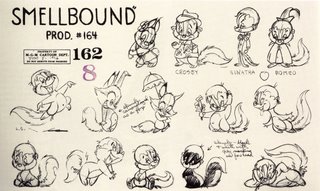

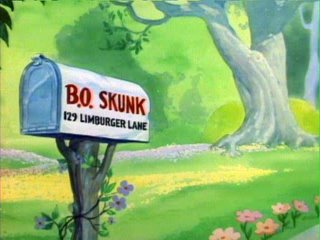
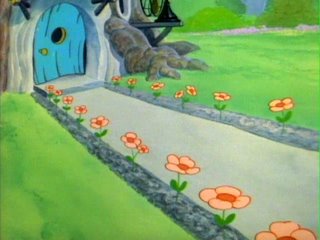

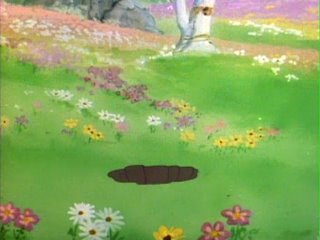
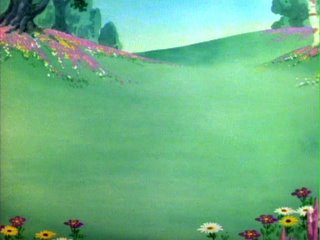
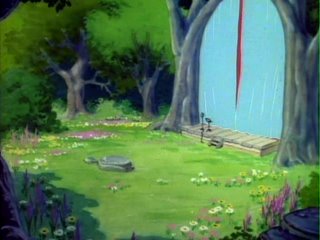
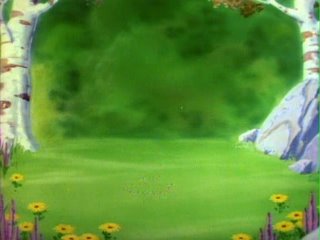
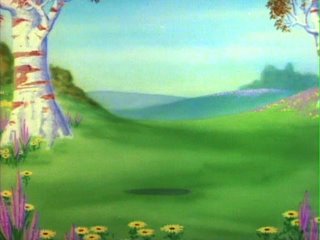

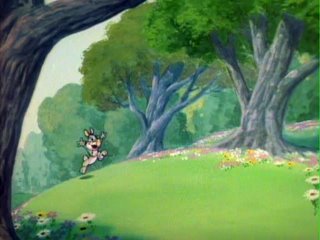

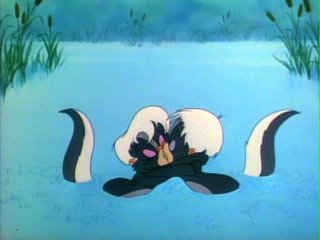
Wednesday, September 20, 2006
Andy Panda
Monday, September 18, 2006
Little Orphan Storyboard
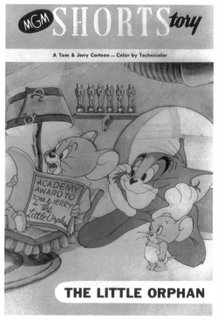
Updated 9-20
*It's been brought to my attention that these are not the original boards, check Steve's comments for an explanation. But the in-house MGM magazine cover is cool so I'm just going to leave the post up as a testament to my ignorance.*
Here's some scans of the storyboard from Hanna-Barbera's Oscar winning short "The Little Orphan". These are a lot rougher drawings than a couple of the other storyboards I've seen reprinted but the story is all there.

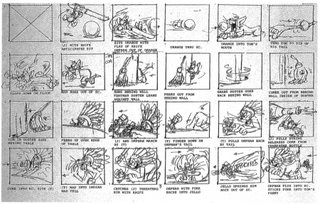
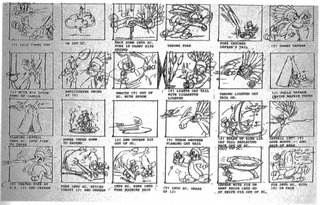

Thursday, September 14, 2006
Foolish Fable-The Dog That Cried Wolf
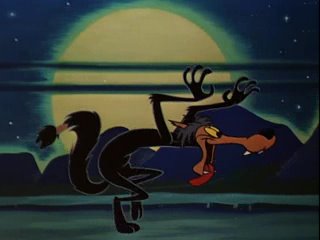
I'm a really big fan of the cartoons produced at Lantz Studios under Shamus Culhane and Dick Lundy's direction, but only a handful of cartoons that came after their departures. This is one of them though, I really love the wolf's design and his antics througout this cartoon, which was directed by Paul Smith who was an animator under both Lundy and Culhane. Check out Thad K's post of a scence animated by Paul Smith, funny stuff. Enjoy the cartoon.
Sunday, September 10, 2006
Gophers
Here's a couple of model sheets of gophers from different cartoons. The first is from Tex Avery's hilarious "Garden Gopher", the second from Art Davis' "The Goofy Gophers" and the last is some screen shots from Dick Lundy's short "Donald's Garden". These are three different approaches to the same animal, Tex's is of course more cartoony, Disney's is super appealing and the "Goofy" gophers are somewhere in between. Though I can't stand those two.

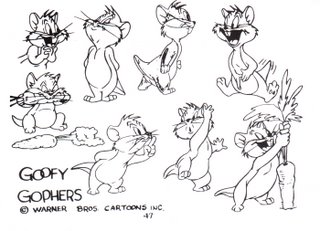
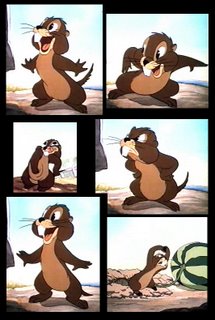



Friday, September 08, 2006
Screwball Squirrel

Here's some models sheets and animation drawings from Tex Avery's "Screwball Squirrel". This is probably one of my favorite cartoons of all time and Screwy's one of the funniest characters. I was dumbfounded when I read that Tex didn't think he was funny, talk about a perfectionist, sheesh. I prefer this earlier design over the one in the later shorts like "Lonesome Lenny", though he does look a little screwier in those other shorts. I can't think of another character who takes such delight in pounding the hell out of his adversary as much as Screwy, he's a little over the top but that what I like about him.

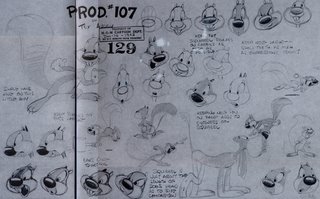


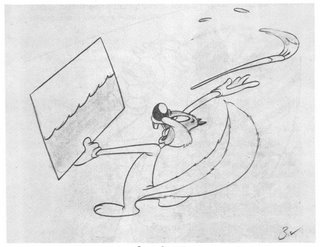



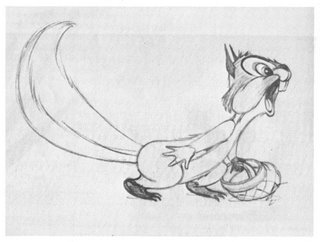
Tuesday, September 05, 2006
Willoughby
I've been practicing drawing dogs lately like Pluto, Meathead and Dimwit so I thought I'd share a model sheet of Willoughby, the original (I think) or at least the first to say "duh" between each line, stupid dog. I never get bored of watching him or any other dumb dog characters get out-witted over and over. Willoughby starred in one of my favorite Bugs Bunny cartoons "The Heckling Hare". He first starred in "Of Fox and Hounds" directed by Tex Avery in 1940.
Friday, September 01, 2006
Timing Animation To Music - 2
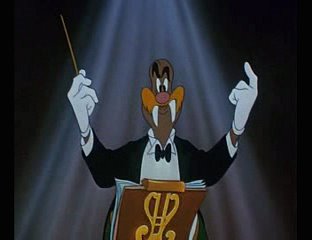
I've been reading the comments and links on musical timing posted on the Animation Archive and I think it's really starting to make sense to me now. If you haven't checked them out go to Mark Mayerson's and Hans Perk's posts on musical timing, it's really helping me make sense of it. I'm sure I'll struggle with the concept for a while but I was stuck on a scene and after reading these posts I was able to sit down with just a metronome, actually it was just some freeware and figure what beats per minute the song I'm timing to was at. I came to the conclusion that the song is at 90 beats per minute, thanks to Mark's post this equal 16 frames per beat with 2 beats per measure or 32 frames per measure. Here's the original bar sheets that I timed out.
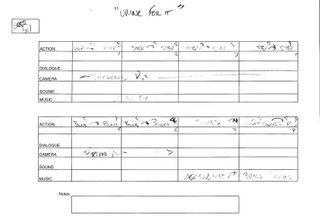
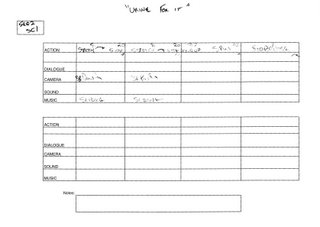
My mistake was I broke down the beat wrong. I was kind of flip flopping from one beat per measure, or 16 frames, to two beats per measure, 32 frames. That's why I was having so much trouble timing out some of the action. The song is only going to be played for 15 seconds, that would equal 360 frames. The frame count above the action for each measure falls way short of that. I was sitting here wondering what I did wrong. Once I determined what the right beats per minute is, it became surprisingly easy and most importantly accurate. Here's the new bar sheets I timed today.
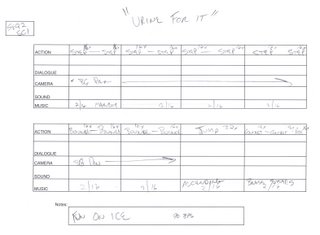
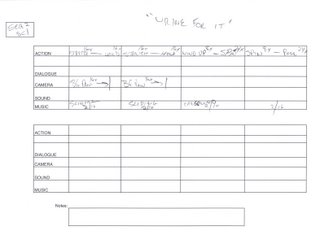
Since I now had the beats per minute and frames per measure I was able to sit down at my kitchen table without the song or even a metronome, just thinking of the song in my head and keeping the beat, which was like saying 1-2, 1-2, and following the action from the storyboard to time out the scene. This method of timing is gold. If you look at the last measure, the charcater is spinning for eight frames and then he slaps into a pose and holds it for the remaining 24 frames. It's like counting 1-and-2-and-1-and-2, further breaking down the beat. The reason is the song comes to an abrupt end during the first beat, on the "and". If I was to time it the way I had started timing this cartoon I would spent so much time moving key poses around until I placed it in the right frame. I timed the short scene out in a matter of minutes, and I'm just a novice. More importantly, is that is totally accurate. I didn't believe that I had timed it right so I checked it in Flipbook. I imported the song, listening to it slowly frame by frame while following the bar sheets. The steps for the walk were on the beat every 16 frames as timed and all the other actions would line up in sync with the song. I don't know if I'm really doing it totally correct but I do know that I got the result I wanted. It's amazing to me that here's something I tried a while back and got stuck on and put on the backburner popped up and with just a handful of comments and blog postings that people have shared that I'm alreay pointed in the right direction. Stephen Worth really needs to be commended, or given a badge or at least a nice shiny gold star for sharing those Ising bar sheets and encouraging people to discuss the topic. I can't believe I missed Hans' post back in May, that's about the time I started to get interested in timing this way. I'm going to start trying some other scenes to really get this down but I think this really open up some new ideas for me. I hope that sharing my mistakes and how I corrected them helps someone who's just starting to learn this like I am, and thanks again to all the professionals who shared their knowledge of the subject.
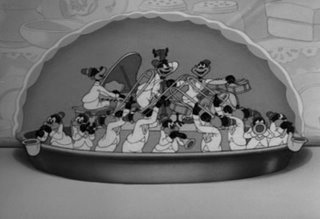
Subscribe to:
Posts (Atom)









